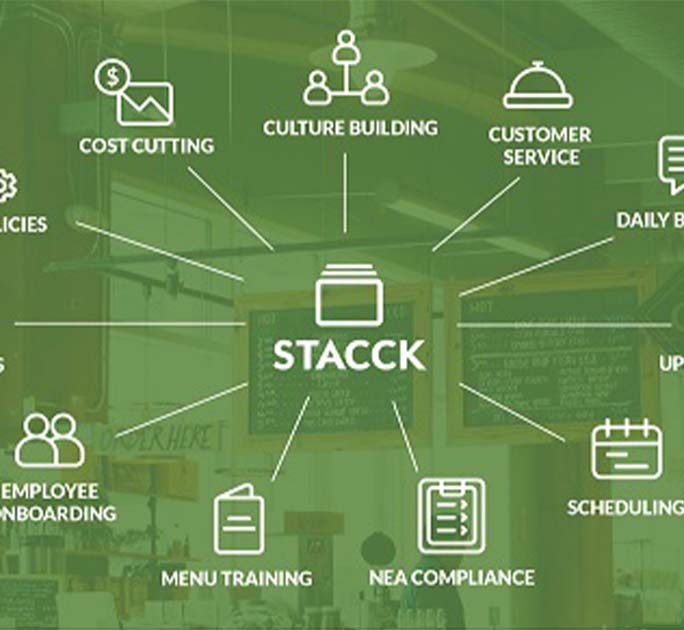5 Ways Data Analytics Can Help SME
As social, mobile and cloud technologies become more prevalent, these words are thrown around a lot, but are these processes valuable only for big businesses or can small and medium-sized enterprises (SMEs) benefit as well?

To answer this question, let’s start by defining Data Analytics (DA), which can be broken down into three key components: (a) Gathering data, (b) Analysing data and (c) Obtaining insights from data. The purpose of this process is to unearth insights to better understand customers and business processes. This article shares how DA can add value to SMEs and provides pointers to start their DA journey to stay ahead of their competition.
In our opinion, all businesses, including SMEs, can benefit from DA. In fact, agile and focused SMEs can leverage DA to make more informed decisions for faster growth. There are two key reasons why DA is accessible to SMEs as well:
- Enhanced Digitalisation: More than ever, data is more readily available. This extends to SMEs’ own internal data (POS, cloud accounting, etc.) and external data (online reviews, competitors’ websites, etc.).
- Out-of-the-box Technology Options: As SaaS (software-as-a-service) becomes more widespread, SMEs can quickly leverage these lower-priced and user-friendly solutions to analyse existing data and obtain insights.
Therefore, SMEs should seek to incorporate DA into their existing planning processes to gain an edge over their competitors and avoid getting left behind. We will focus on five ways that DA can help SMEs, in particular, those in retail and consumer products, since they make up a significant segment of Singapore’s SME landscape (24,598 out of 215,600 enterprises or 11% as of 2016).1
- Understanding business at one glance
- Inventory management
- Targeting the right customers at right time with right content
- Cross-selling products
- Sentiment analysis
Five Data Analytics Applications for SMEs
1. Understanding business at one glance
Today, we have access to more data (e.g., POS) than ever before. Due to this overwhelming multitude of data, it is extremely difficult for SMEs to make any sense of these data. Therefore, SMEs may choose to leverage on Business Intelligence (BI) tools like Tableau and Power BI to build dashboards to monitor business indicators at a glance.
Such dashboards will allow SME owners to observe sales trends and patterns on an overall basis, as well as deep-dive into product categories and customer groups. For example, an SME that retails/rents football jerseys and accessories with a website may seek to understand which campaigns have the greatest impact on website visits. Through the dashboard example below, this SME owner can see that LinkedIn campaigns are the biggest contributors to website visits and may choose to enhance his LinkedIn spend.

SME owners may choose to get key dashboards refreshed on a weekly basis so that data can guide business decisions. If dashboards dig deeper and display results of various campaigns, SME owners may also arrive at actionable insights such as sending an average of 1 email promotional message resulted in a 14% increase in weekly purchases.
2. Inventory management
Stocking the shelves with the right product mix will also enhance SMEs’ revenues while avoiding costs associated with over-stocking. To inject more quantifiable data into re-stocking forecasts, local leather goods specialist Goodvine Group introduced radio frequency identification (RFID) tags2 in 2015 to track granular product information such as design styles and colours.
Automatically capturing data also allows Goodvine to do more in-depth analysis of seasonal demands and 'decay factors' like the possibility of products becoming less popular over time. Ultimately, such analysis also helps them glean insights on the features of a product that resonate with consumers and adapt their designs accordingly.
3. Targeting the right customers at right time with right content
All businesses seek to get the right information to your target audience’s eye level when customers are evaluating the purchase of similar products or services. But how is this done in practice?
An American online pet pharmacy PetCareRx has served pet owners for more than 15 years. It sells many products that customers reorder 3 to 12 months ahead. Like most retailers, PetCareRx took a one-size-fits-all marketing approach, offering a standard list of promotions to all. However, many customers were looking to buy at different times of the year.
Using predictive analytics, PetCareRx was able to differentiate discounts across customers, leading to higher sales and retention. Customers were ranked according to their likelihood to buy. Using this ranking, PetCareRx offered minimal discounts through email to customers who were already deemed likely to buy and larger discounts for customers who were less likely to buy. These promotions drove incremental revenue from both of these two groups.
4. Cross-selling products
Another common business objective is to enhance the average spend per customer through cross-selling. In practice, SMEs’ frontline staff are likely to possess different levels of expertise in this art as their experience levels and observation skills vary. To provide for better training and guidance to staff members, restaurateurs need to get a solid understanding of groups of products customers typically buy.
For example, market basket analysis can determine commonly-ordered bundles of menu items in a Japanese-style Taiwanese restaurant. Interestingly, this restaurant recorded an average 67 percent success rate for suggesting these bundles to undecided “persuadable” customers3.
These insights help restaurateurs better understand customers’ preferences, allow frontline staff to make menu recommendations backed by analysis and perhaps even shorten guests’ decision and ordering time, thus improving table turnover!
5. Sentiment analysis
Enhanced digitalisation has provided a treasure trove of unfiltered customer sentiments on social media platforms that SMEs can tap on to adjust or enhance their products. For example, CTC Travel is a travel agency veteran that has successfully tapped on digital customer sentiments and adjusted their product offerings ahead of a major travel fair on their calendar.
In 2014, CTC Travel listened to online chatter regarding travel and found out that younger people are increasingly interested in going on a free-and-easy drive tour in Australia4. Next, CTC Travel created a Facebook Page, “CTC Travel to Australia”, and released content about Australia drive tour experience. The resulting content was well-received and both the Facebook Page and official CTC Travel Page saw an increase in fans.
Building up anticipation online prior to actual introduction at this travel fair proved to be a winning strategy as CTC Travel saw a 25% increase in walk-ins and $20,000 in revenue which represented an ROI of 167%. Likewise, SME owners can leverage sentiment analysis to discern hot topics and promote relevant products online in the run-up to their planned sales events.
Too many retail and consumer products SMEs have been failing to leverage the data at their disposal, missing out on the resulting insights. DA insights allow SMEs to really understand their customers and empowers them to create meaningful engagement opportunities as well as additional revenue opportunities.

To start, SMEs need to examine their business objectives and select a specific problem to apply a DA approach to better understand how best to implement and maximise the ROI of its analytics approach.
1Statistics: Singapore Department of Statistics 2Tapping on data science in retail 3Finding Ideal Menu Items Assortments: An Empirical Application of Market Basket Analysis 4Generating sales through social media in Singapore: Case studiesInterested in finding the right data analytics solution for your company? DBS TechMatch provides customised solutions.
This article was originally published by RSM Singapore.
Was this information useful?
Thanks for your feedback
Subscribe to DBS BusinessClass
Stay updated with the latest market trends and industry insights, connect with a network of entrepreneurs, and gain access to exclusive event invitations. Join Asia's fastest growing business community – get your complimentary membership here.





That's great to hear. Anything you'd like to add?
We're sorry to hear that. How can we do better?